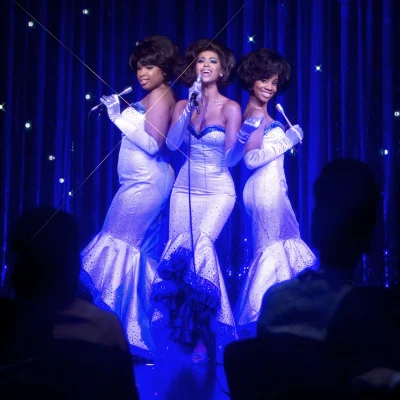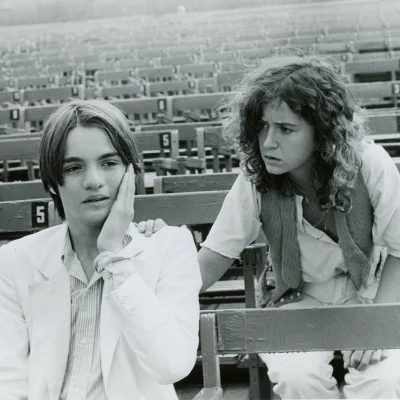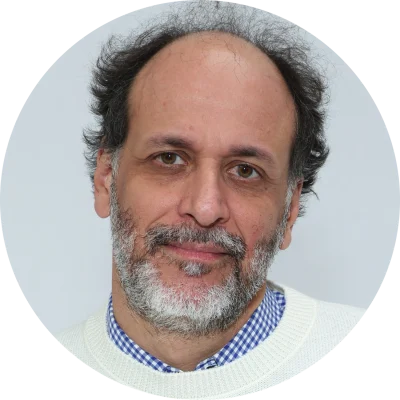
When Matthew Heineman was 21, he heard Albert Maysles, the director behind such documentaries as Grey Gardens and Gimme Shelter, give a talk in which he said something that would change the young filmmaker's outlook on life: "If you end up with the film you started with, then you weren't listening along the way."
"I've found that to be good advice for life, but also very sage advice for filmmaking," Heineman says. "Be open to the story changing. Don't be dogmatic. And this is something that I've held very close to my heart both in a macro sense (the films I choose to take on and how I find my way to them) and in a micro sense (within each shoot, shoot day, scene, lens change). Look around the frame at all times!"
In 2016, Heineman received an Oscar nomination for Best Documentary Feature with Cartel Land, which examined drug trade along the U.S. and Mexico border. (The film also earned four Emmy nominations and won two, including Exceptional Merit in Documentary Filmmaking.) His newest documentary, Retrograde, unfolds over the final months of the U.S. war in Afghanistan, as Heineman embedded with the U.S. Army Green Berets on what would be their final deployment there.
"My initial intention was to bring audiences into the closed world of the Green Berets after almost two decades of war. But, as time passed and the U.S. pulled out of Afghanistan, we decided to follow our journalistic instincts and stayed in the country to follow Afghan General Sami Sadat," the filmmaker says, once again implementing Maysles' words of wisdom. "As a result, we ended up with a front row seat to the end of the war and a totally different film than I had set out to make."
He adds, "I love embracing this type of unpredictability and adaptation inherent in making vérité films. By doing so, my goal always is to try to humanize stories that often seem so far away or are relegated to stats or headlines."
Below, Heineman shares with A.frame five documentaries that taught him the power of vérité filmmaking and have most inspired him in his own filmmaking.

Written and Directed by: Robert Drew
Early in my career, I attended a screening of Primary at the Paley Center in New York, followed by a conversation with filmmakers Robert Drew, Richard Leacock, Al Maysles and D.A. Pennebaker. For a young filmmaker who had never set foot inside a film school, this was one of those moments when your view of the world shifts. Seeing this pioneering film — the prototype for the modern-day documentary — with those four luminaries was an almost spiritual experience. I felt the full power and possibility of vérité filmmaking, of experiencing reality as it occurs, unscripted and unplanned.
The film inspired me to try to emulate that style of filmmaking — to document the world as it unfolds and hopefully capture a glimpse of the human condition in the process. From Cartel Land to Retrograde, I attempt to put myself and my camera in the middle of the action to tell the story through the eyes of the people who are living it. As was done so well in Primary, my aim as a filmmaker is to let audiences see a world they otherwise would never get to see, and to meet people they otherwise would never get to meet.

Written and Directed by: D. A. Pennebaker
This vérité film by Pennebaker was similarly groundbreaking and became a gold standard within the storied tradition of music documentaries. Pennebaker fully immersed himself in the life of Bob Dylan on his tour to England at a critical moment early in his career. His unfettered access, quiet observation, and constant presence let the audience feel like they are in the room with Dylan. As Pennebaker himself described to me, this new brand of cinema allowed audiences to see the action 'happen through the camera, not through a narrator or through exposition, but through the camera that watches… always it watches.' It's not 'fly-on-the-wall' filmmaking — as many people think of when they hear the word vérité — but rather, immersive and involved, with every composition, every edit, deliberately made, and intentional.

Directed by: Henry Alex Rubin and Dana Adam Shapiro
Murderball is another vérité film that inspired me as I got into filmmaking. The story of rival wheelchair rugby teams from the U.S. and Canada in the lead up to the Paralympic games has some incredibly dramatic and well shot vérité moments. The film also taught me that documentaries could be more than what I had traditionally watched in history class by utilizing elements that are more typically associated with narrative films: they could have antagonists and protagonists, three acts, viscerally shot action sequences, and characters that pop off the screen like any movie star.

Directed by: Lucy Walker
Lucy Walker's film about Amish teenagers experiencing the modern world was another vérité inspiration for me. I was in awe of her ability to track her participants' dramatic and unexpected twists and turns, especially given the level of intimacy on display in this very insular world. That intimacy demonstrated an incredible amount of trust between filmmaker and participant, which is an essential component of any longitudinal character study. With my films, I've always found that trust needs to be constantly earned and 'vows' renewed throughout the filmmaking process to help make people feel comfortable in front of the camera, and allow the filmmaking team to blend into the fabric of their daily lives.

Directed by: Peter Nicks
In 2012, I made my first feature documentary with Susan Froemke, a deeply important mentor of mine and a disciple of Al Maysles. It was a hybrid vérité/essay film exploring what is wrong with American healthcare. On the festival circuit, I first met my good friend Pete Nicks and saw The Waiting Room, his incredible vérité portrait of an Oakland E.R. department. While the two films were often discussed together that year, I remember being deeply envious of the purity of Pete's vision — his amazing deep dive into this one location, and the doctors, nurses, and patients that inhabited it. The film had a profound impact on me and definitely, once again, showed me the power of character-driven, observational filmmaking. Years later, it also inspired my approach to documenting the first four months of Covid in one Queens hospital in New York in my recent film The First Wave.






